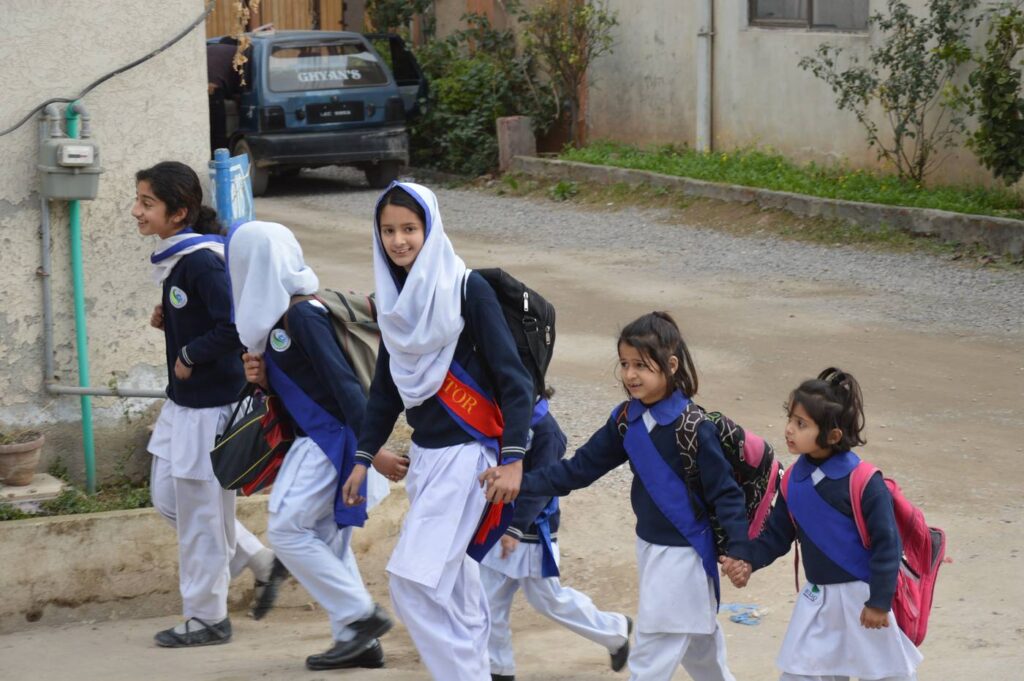Introduction
In August 2025, Punjab experienced one of the most disruptive natural events in recent years as relentless monsoon rains combined with overflowing rivers to create widespread flooding. The rising water levels of the Ravi, Sutlej, and Chenab displaced communities, submerged farmland, and forced government authorities to take emergency measures. Among the most significant decisions was the temporary closure of schools across the province. These flood-related school holidays became a central focus for parents, students, and administrators, shaping the academic calendar in unprecedented ways.
This article explores the timeline of school closures, district-level decisions, administrative responses, and the long-term implications of this educational disruption.
Why Schools Were Closed
The closure of schools was not a hasty decision. Officials recognized several pressing reasons for announcing holidays:
- Safety Concerns – Flooded roads and collapsed infrastructure made travel dangerous. Authorities prioritized the safety of children and teachers above all else.
- Buildings Affected by Flooding – In many areas, school campuses were directly impacted by waterlogging, with classrooms and playgrounds submerged.
- Relief Camp Transformation – Dozens of schools were repurposed into temporary shelters for displaced families, making them unavailable for classes.
- Unpredictable Weather – With continuous rain and warnings of further river overflow, education departments opted for precautionary measures rather than risk lives.
Timeline of School Holidays
The school holidays due to flooding followed a staggered pattern across Punjab, depending on the severity of conditions in each district.
Province-Wide Closures
From August 27 to August 30, 2025, all schools—government and private—remained closed across Punjab. This was a unified measure to keep students safe during the peak of flooding.
District-Level Extensions
- Sargodha (Kot Momin Tehsil): Schools were shut for an additional week, extending closures until September 2, due to persistent flooding.
- Sialkot: Schools and colleges closed on August 29 and 30. Later, academic activities were delayed further, with reopening aligned to the second week of September.
- Lahore: While most schools reopened on September 1, about 45 institutions located in flood-hit neighborhoods stayed closed. These schools doubled as relief centers for displaced families.
Universities and Higher Education
Punjab University extended its summer break until September 7, resuming classes from September 8. Several colleges in flood-affected areas adopted similar extensions to ensure safety and accommodate recovery operations.
Rumors and Clarifications
During the flood crisis, misinformation spread quickly across social media. Some reports claimed that schools would remain closed until September 5 or longer. However, the provincial education department clarified that holiday extensions would only be announced officially, based on local conditions. This emphasis on verified information highlighted the importance of communication in times of crisis.
Educational Impact of Flood Holidays
The disruption of classes due to floods carried several consequences:
- Interrupted Academic Calendar – Exams, lesson plans, and scheduled activities were postponed, forcing schools to revise timelines once normalcy returned.
- Shift Toward Digital Learning – In urban centers, some schools briefly switched to online assignments. However, in rural areas with limited connectivity, such measures were impractical.
- Psychological Effect on Students – Floods created anxiety among children, many of whom witnessed damage to their homes or communities. This emotional strain compounded the academic break.
- Pressure on Teachers and Administrators – Once schools reopened, teachers faced the challenge of covering delayed syllabi within shortened timeframes.
Relief and Administrative Efforts
The provincial government, disaster management authorities, and rescue services coordinated relief operations. Key measures included:
- Evacuations and Safety Zones – Rescue teams relocated residents from submerged villages to safer areas, often using school buildings as shelters.
- Health and Hygiene Facilities – Temporary medical camps were established within school premises to aid flood-affected communities.
- Support for Students – District administrations promised academic adjustments, including extended deadlines and revised timetables, to reduce stress on learners.
Lessons Learned
The flood-induced holidays of 2025 highlighted several critical lessons for the education sector:
- Need for Flood-Resistant Infrastructure – Schools in low-lying areas must be designed with raised foundations and stronger drainage systems.
- Preparedness Plans – Education departments require contingency plans that balance safety with minimal disruption to learning.
- Use of Hybrid Education – Digital learning solutions can act as temporary substitutes, ensuring that students continue their studies during emergencies.
- Community Role of Schools – The transformation of schools into relief shelters reinforced their importance as community centers in times of disaster.
District-Wise Summary of Closures
| District/Institution | Closure Dates | Notes on Impact |
|---|---|---|
| Punjab (all districts) | Aug 27 – Aug 30, 2025 | Province-wide precautionary closure |
| Sargodha (Kot Momin) | Until Sept 2, 2025 | Extended shutdown due to heavy flooding |
| Sialkot | Aug 29 – 30; reopen Sept 8 | Prolonged closure as waters persisted |
| Lahore | Sept 1 partial reopening | 45 schools used as relief shelters |
| Punjab University | Until Sept 7; reopen Sept 8 | Summer vacation extension |
Conclusion
The Punjab school holidays of 2025 caused by floods were a stark reminder of how natural disasters disrupt daily life, especially the education sector. While safety remained the top priority, the closures also underlined the importance of resilient infrastructure, better disaster planning, and alternative learning methods.
By taking decisive action, authorities were able to protect students, provide shelter for displaced communities, and gradually restore academic routines. However, the episode also raised important questions about long-term preparedness. As climate change increases the likelihood of such extreme events, Punjab’s education system must adapt with stronger strategies to ensure that learning continues even when nature interrupts.


